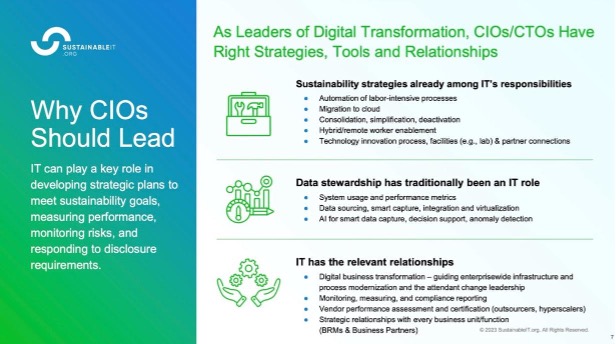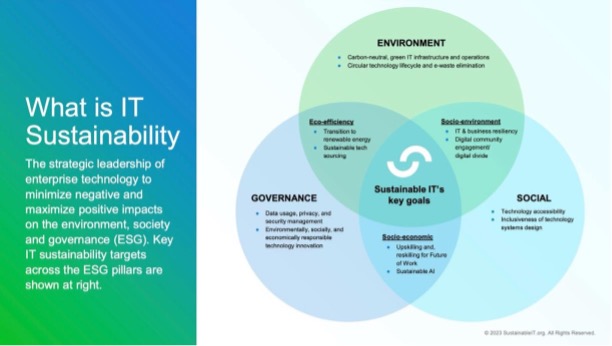
(Editor’s Note: What follows is Part 1 of a 3-part article that will be shared in the pages of A&G Magazine each Monday for the nxt three weeks. The abstract for the 3-part series appeared here. The author, Lisa A. Pratico, was profiled here in the spring of 2023.)
I was invited to SustainableIT.orgs regional roundtable at Harvard University last month. As some of you know I am as passionate about leading and bleeding edge technology and its potential for positive disruption as I am regarding the preservation of the earth. Some of you also know of my deep-rooted passion for mountain biking, skiing and snowboarding. With crazy high temperatures in the summer in New England making it unbearable for any activity outside and the lack of any type of winter, well needless to say, this was an incredibly important topic for me personally and professionally.
A huge thanks to Dave Best at sustainableIT.org for the invitation. A special thanks to the speakers including Harvard’s CIO, Klara Jelinkova, who reviewed their plan on sustainability and the reduction of their carbon footprint at the university,
Gage Hill’s, Assistant Professor at Harvard SEAS, presentation on the impacts for fast compute on chip sets and more importantly the ever-growing increase in speed and power usage got me really thinking about AI. As much value as it brings to the world, and I believe it is here to stay and be a game changer in the technology landscape, have we really thought about the carbon footprint of computing resources it uses? Gage is assessing new ways of building out semi-conductors and the integration of chip sets to promote energy efficiencies. I also participated in Google’s Cloud Next ’24 last week where they spoke about the NVIDIA GB200 NVL72 chip sets and Hyperdisc ML that’s literally 100X the performance of “ultra” and “express” SSDs on other clouds. Google announce their AI Hypercomputer cloud infrastructure which gets new GPUs, TPUs and optimized storage. So at least R&D is trying to solve the ever-growing problem for the need for more compute power.
We seem so focused on performance and power which is needed for AI and LLM’s have we truly thought about its impact on our carbon footprint?
As a primer, SustainableIT.org has come up with a great graphic on the 12 characteristics of sustainable IT organizations across the ESG continuum. Sustainability: Governance, Environment and Social. They also had a great discussion and slideware on “Why CIO’s should lead”.


Several of us, in IT leadership roles have been doing several of the initiatives outlined under the umbrella of Digital Transformation for several years. Sometimes it is with financial and organizational support and sometimes it’s with a smaller scope to prove out the need, viability and value through MVPs. That said, according to data from Info- Tech Research in 2022, 1 in 4 organizations are not supporting any ESG mandates; across 11 industries, only 18% have sustainable IT strategies.
A shout out to National Grid who presented real tangible metrics on their sustainability goals and what their organization is doing with respect to reducing their carbon footprint. Look up Jody Elliot at Nationalgrid.com on the great work they are doing with ServiceNow in this area.
At the end of this great session, I was even more intrigued with the knowledge that organizations may not have the support (people, funding, mandates) to ensure they are meeting sustainability metrics. Intrigued where IT is in supporting sustainability and layering on all the discussion on AI and LLM in the world, I realized that AI could erode the improvements the 18% have been focused on. In Part 2 of this article, we will look at why we are at cross-roads of inflection and where we all really need to pay attention to the consumption of AI and LLM. We will also cover some amazing university and research advancements in HW and neural networks to combat the carbon emissions problem with AI. I agree with research by SustainableIT.org that the consensus is Gen AI’s value outweighs its problems, and companies that fail to adopt it will sacrifice productivity gains and competitive advantages.
